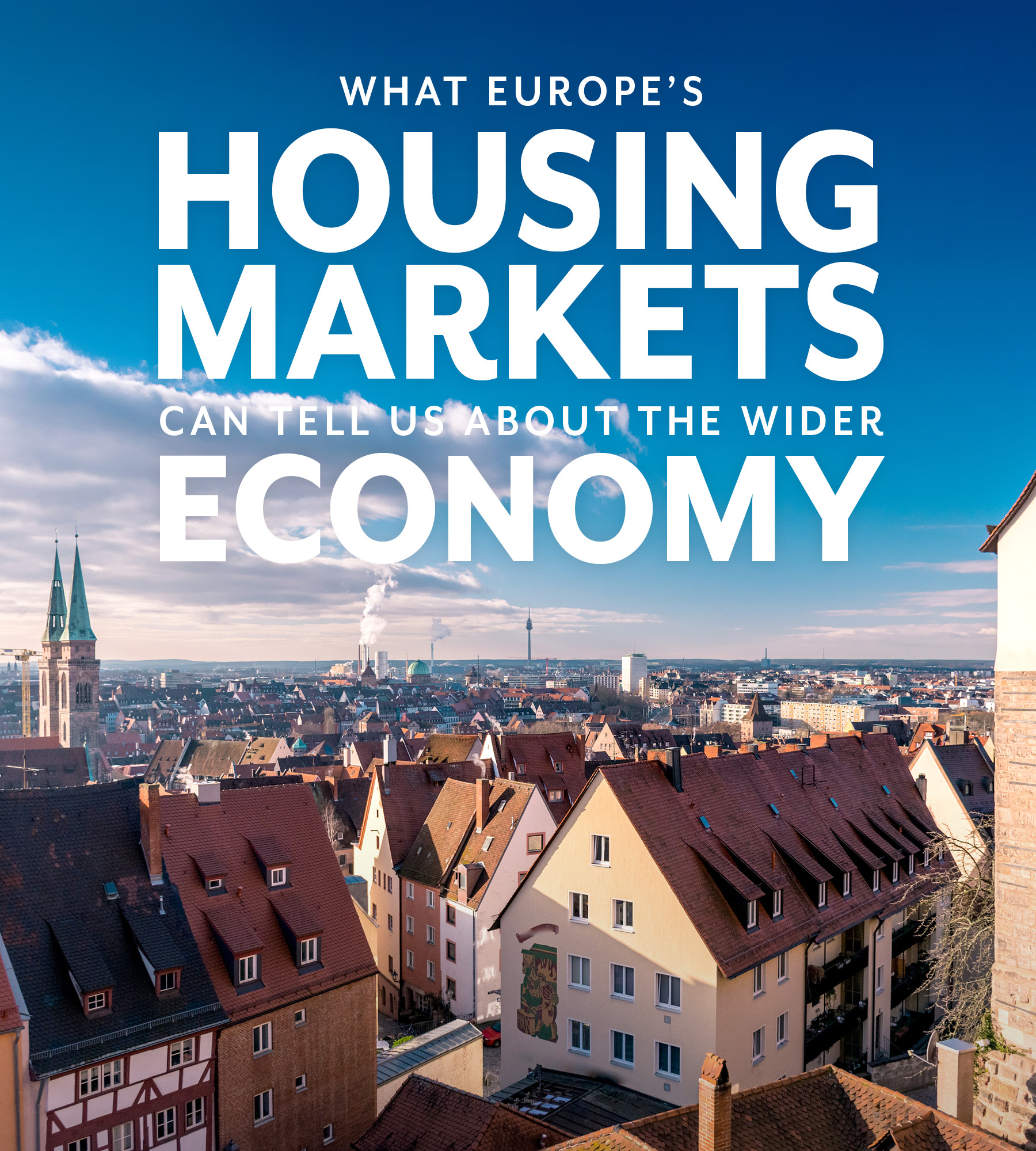Language
You can read the magazine in one of the following languages
Geolocation
You can read the global content or the content from your region

People often talk about how the economy affects housing markets. But what is seldom mentioned, conversely, is how the market itself can act as a barometer for the health of the economy.
Housing markets cannot be considered to be ‘Europe-wide’; each country’s market is different. But with a significant amount of the continent’s finances held in property – and the need for property being very much an unchangeable fact of life – identifying trends and behaviors in how the market moves can offer valuable insights into the economic situation of Europe.
So, after recent turbulence – punctuated by war on the continent, record high interest rates and a cost-of-living crisis spanning nations – what can Europe’s housing markets tell us about how the region is faring?
Following on from the more severe stalls of 2023’s housing market stalemate across Europe, most markets across the continent in 2024 haven’t exactly been bustling in the first half of the year.
However, with interest rates easing over 2024 – and expected to continue easing – Europeans have generally enjoyed a year without the sudden economic shifts of previous years.
More buyers have been slowly entering the market as a result, getting to grips with the ‘new normal’ of higher interest rates following over a decade of abnormally low rates. This has somewhat restored balance between buyers and sellers in the market and indicates a boost in consumer confidence, with more people dipping their toe into the property market.

Many Europeans are acting now to secure better opportunities ahead.
Buyers haven’t returned with the same shopping lists, however, and we’re continuing to see growing demand for one-bedroom apartments, and areas outside of the main city hubs, as expectations are adjusted against a more expensive daily life.
This adaption of property ‘wants’ has busied up certain areas of the market considerably, while slowing down others. Properties once predominantly looked for by individuals or young couples are now in demand from a much wider market segment, and competition is often more pronounced here than in the once sought after three-bedroom-house segment of the market.

This shift can be interpreted as a reflection of a continent with less purchasing power. But it also represents a market-savvy move by those with hope for the future, keen to make their first purchase in the understanding that there is no wrong time to get on the property ladder; many Europeans are acting now to secure better opportunities ahead.
The luxury side of the market represents around five percent of the real estate sector in Europe, and so it captures only a small part of the picture. However, where demand falls can nonetheless signify the economic performance of some of Europe’s key cities.
While luxury properties hold their value well – and beautiful coastlines, old chateaux and large city high-rises will always maintain their attractive features – seeing value and demand increase for these types of properties is a clear sign that a country’s wider industry is robust and on the up.
That’s because return on investment is on the mind for individuals making these purchases. Even though luxury properties may be holiday homes or secondary residences, as opposed to outright investments, buyers will nonetheless seek out opportunities that are set to bring the largest capital gains when putting down such large sums in cash.

It’s a clear sign that a city or country’s economy and industries are performing well when there is growing demand in the luxury sector.
So it’s a clear sign that a city or country’s economy and industries are performing well when there is growing demand in this sector.
In the first half of 2024, the luxury segment of Europe’s housing markets has maintained – and in some cases, increased – its draw. This has, in part, been down to rich buyers keen to put money in a reliable asset at a time when bank’s interest rates are particularly low.
But it also illustrates a continent that is surpassing the challenges of the past few years, with the overall strength of its markets prevailing.
While recent months have represented a buyers’ market, with lower competition overall for those purchasing, sellers, too, have been less willing to enter the market. Many haven’t wanted to enter into a new mortgage on worse terms, and have been using this time to pay off debts and get their finances in check.
However, this slower market activity does spell more positive times ahead. It illustrates European’s trust that, as wages rise, the everyday cost of living will reduce and inflation will be brought down in the near future.
It also indicates that homeowners believe that their property values will rise, so they are choosing to hold onto their homes, expecting higher returns and better rates later down the line.

Many haven’t wanted to enter into a new mortgage on worse terms, and have been using this time to pay off debts and get their finances in check.
What the market is showing now, therefore, is very much a ‘pause’ while recalibration takes place. But there is confidence in the economy’s future prospects. Many will soon be in a better position to put their home on the market, especially with many using this time to organize their finances.
The European housing market is still in a phase of adjustment, but it holds a promising outlook for the future, mirroring the broader economic stabilization and potential growth across the continent.
So while Europe navigates economic and geopolitical shifts, those looking to enter the market can find opportunities to make informed decisions that align with their long-term financial goals by keeping abreast of market behaviors.

Michael Polzler
Contributor Collective Member
Michael Polzler is the CEO of RE/MAX Europe and holds over 25 years’ industry experience across the sector in both European and North American markets. RE/MAX Europe has a network of over 30,000 estate agents spanning more than 40 countries in Europe. For more information visit https://www.linkedin.com/in/michael-polzler-169705146/